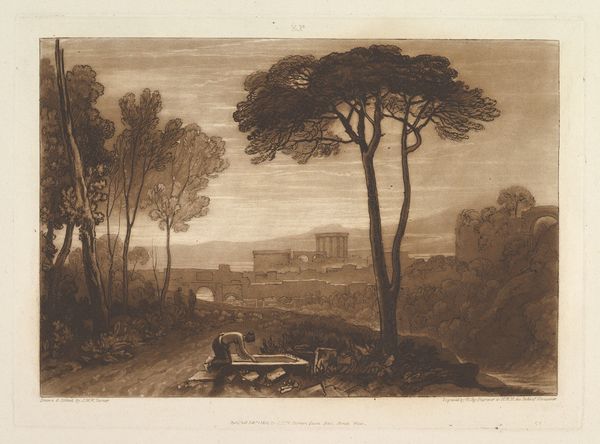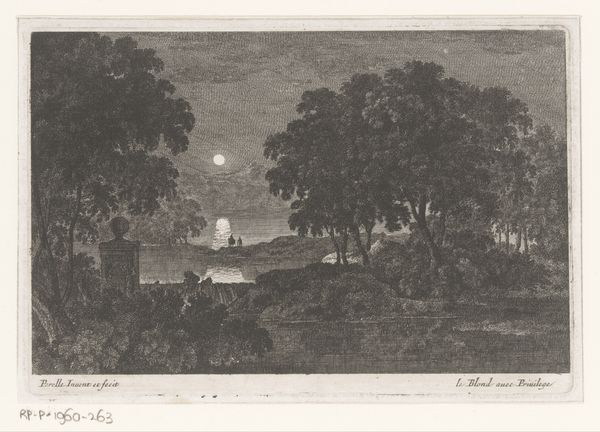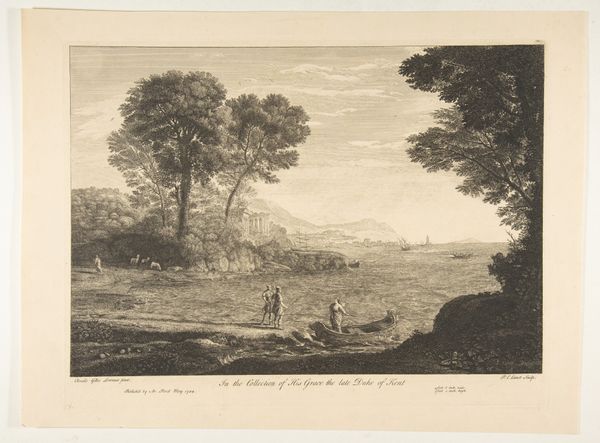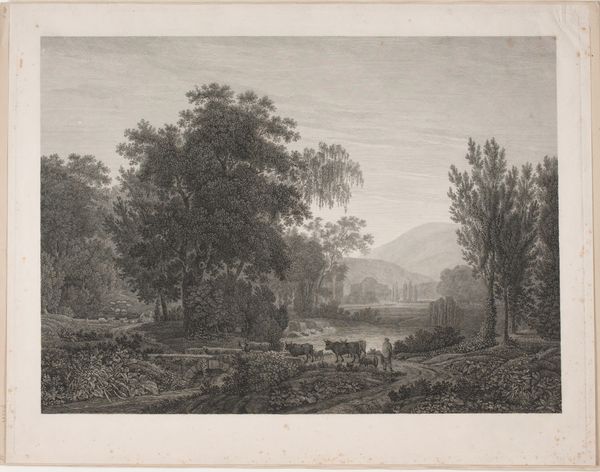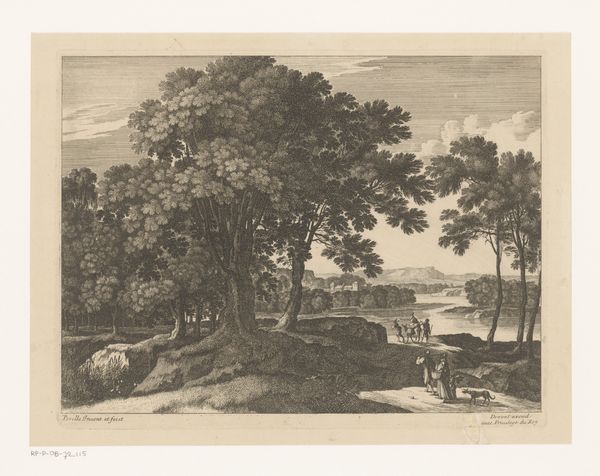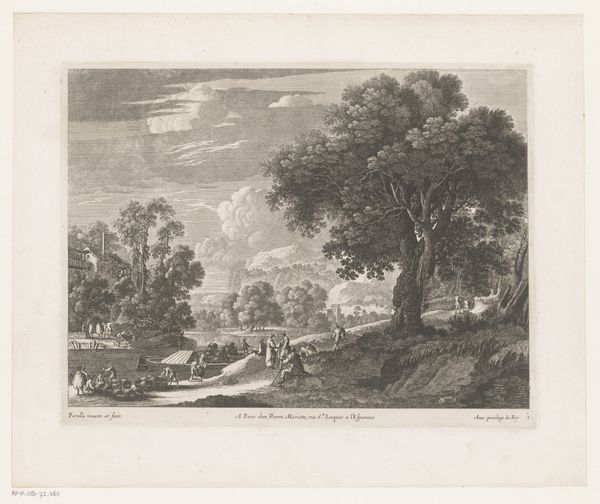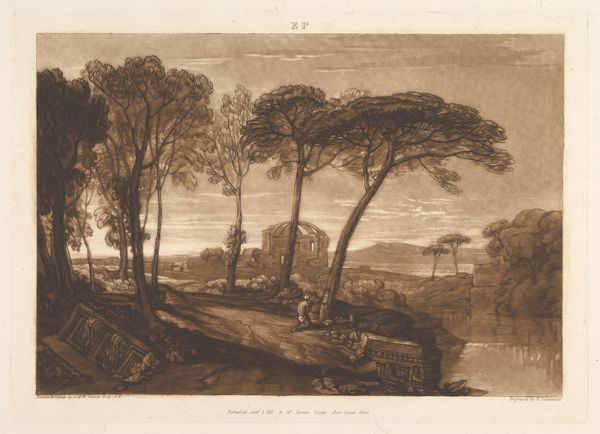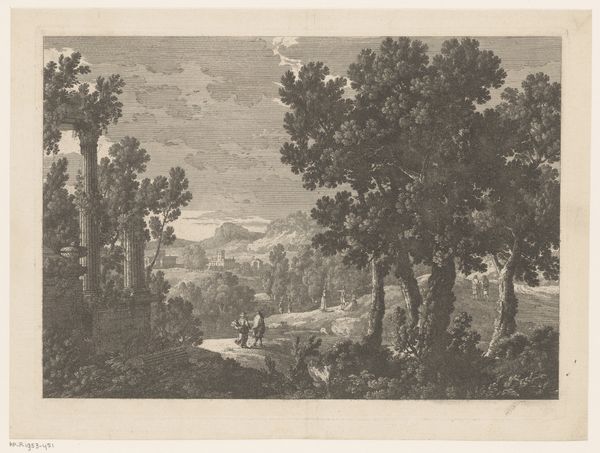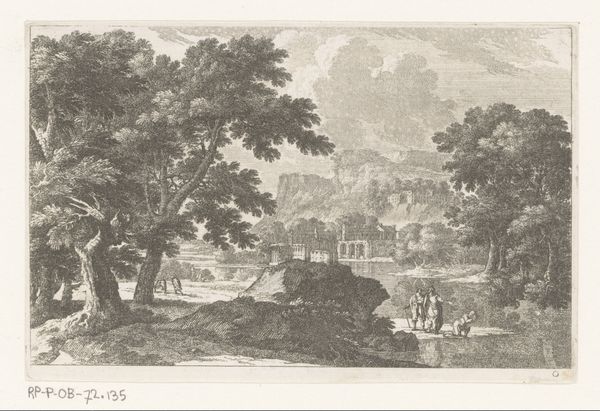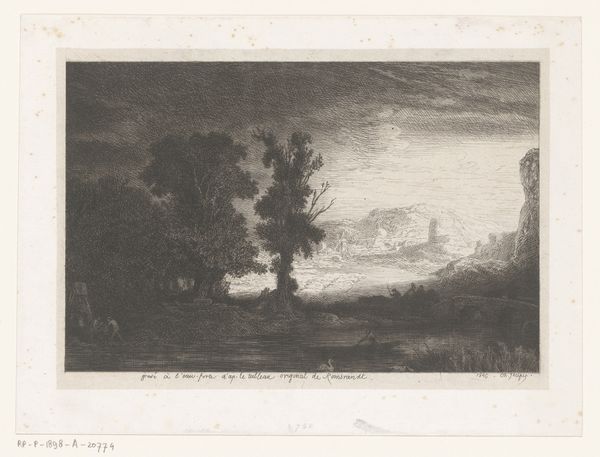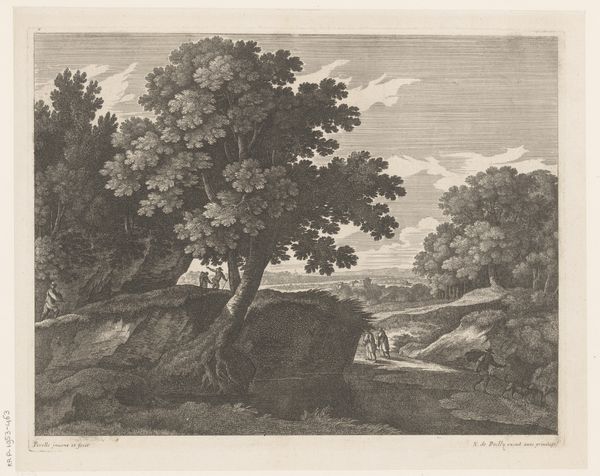
The Bridge and Goats (Liber Studiorum, part IX, plate 43) 1812
0:00
0:00
drawing, print, etching
#
drawing
# print
#
etching
#
landscape
#
romanticism
Dimensions: plate: 7 1/16 x 10 1/16 in. (17.9 x 25.6 cm) sheet: 8 1/4 x 10 1/2 in. (21 x 26.7 cm)
Copyright: Public Domain
This print, made by J.M.W. Turner, is one of seventy-one in his "Liber Studiorum," a series of landscape compositions. These were made using etching and mezzotint, processes that allowed for tonal range and atmospheric effects, resulting in multiple impressions, not unique artworks. The image is built from a metal plate. The etched lines hold ink, and the mezzotint creates a burr that holds even more. This technique is labor-intensive and allows for subtle gradations of light and shadow, seen in the soft glow of the sun and the textures of the landscape. Turner invested his time in working the plate by hand, revealing his romantic sensibility through industrial processes. Consider how printmaking democratized art in Turner's time. Rather than a unique painting accessible only to the wealthy, prints allowed for broader distribution. This speaks to the changing social status of art and its relationship to commerce. By understanding the materials and processes behind "The Bridge and Goats," we appreciate how Turner blurred the lines between art, craft, and industry.
Comments
No comments
Be the first to comment and join the conversation on the ultimate creative platform.
